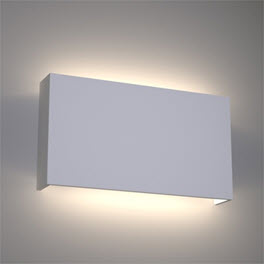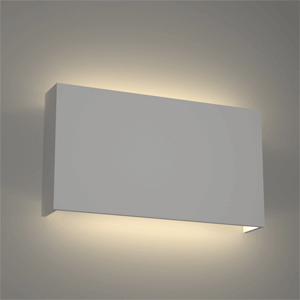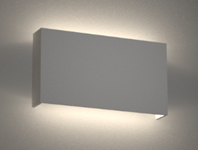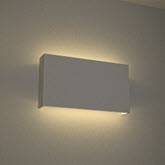IES Lighting
 |
 |
This tutorial shows you how to accurately replicate a real world light from a lighting company using Photometric lights. This particular light consists of twenty-four point light sources (14w LED) in the top and bottom LED boards.
The scene file and IES file can be downloaded here. Note that you will have to open the IES file for each Photometric light.
IES file
You can use a Photometric light viewer, such as the one on http://www.visual-3d.com to view the IES file provided in the link above. It is depicted in a diagrammatic form for easier understanding:
 |
 |
| IES light profile rendered with MtoaA (left) and viewed with a Photometric light viewer (right). |
- Start off by creating a Photometric light and position it above the LCD board above the far left LCD hole.
- Duplicate the lights so that there are twenty-four in a row. Duplicate the row and rotate them so that they are pointing downwards as indicated in the image below.
 |
| Twenty-four Photometric lights per row |
Color Temperature
One aspect of lamp color is its color appearance – whether the light from the lamps looks ‘warm’ or ‘cool’ – measured by the correlated color temperature (CCT). Lamps with a warm appearance having a CCT of 2700-3000K are generally considered appropriate in a domestic setting. Lamps of 4000K and above are considered ‘cool’ and are more appropriate for office and some retail applications. The color temperature for this particular light, as indicated by the lighting manufacturer is 4500 K.
- Use the 'Attribute Spread Sheet' window to change MtoA attributes for all of the lights at the same time. Make sure to select the shape node to see the MtoA attributes (use the down key (pickWalkDown) to select the shape node).
 |
Lighting
Changing the exposure of the lights can be done through the light source. However, it is easier to adjust the exposure using post-processing software if the scene is rendered as a 32-bit EXR image.
 |
| Modify the light exposure in post |
We can further reduce the over exposed areas on the wall by tone mapping the image. This also helps to reduce noise in the brightly lit areas on the wall.
- Render the scene as a 32-bit EXR.
 |
 |
| Before tone mapping | After tone mapping |
Indirect Lighting
One way to improve noise and render times is to reduce the amount of indirect lighting for the Photometric lights. However, as you can see in the images below, it reduces the amount of bounced light in the scene, and therefore we lose some subtle detail.
 |
 |
| Indirect: 0 | Indirect: 1 |
Diffuse Samples
The Photometric lights are quite close to the light and wall, and we are getting some noise in the brightly lit areas. Increasing the Photometric light Samples does not improve the noise. Increasing the GI Diffuse Samples reduces noise but will add to render times.
 |
 |
| 4 | 2 |
That concludes this tutorial on using IES files with Photometric lights. You could also try to test IES files from other lighting manufacturers such as Erco, Lamp, Osram, and Philips.
 |
| Further example |
Many thanks to Astro Lighting for supplying the IES file and RIO light model.